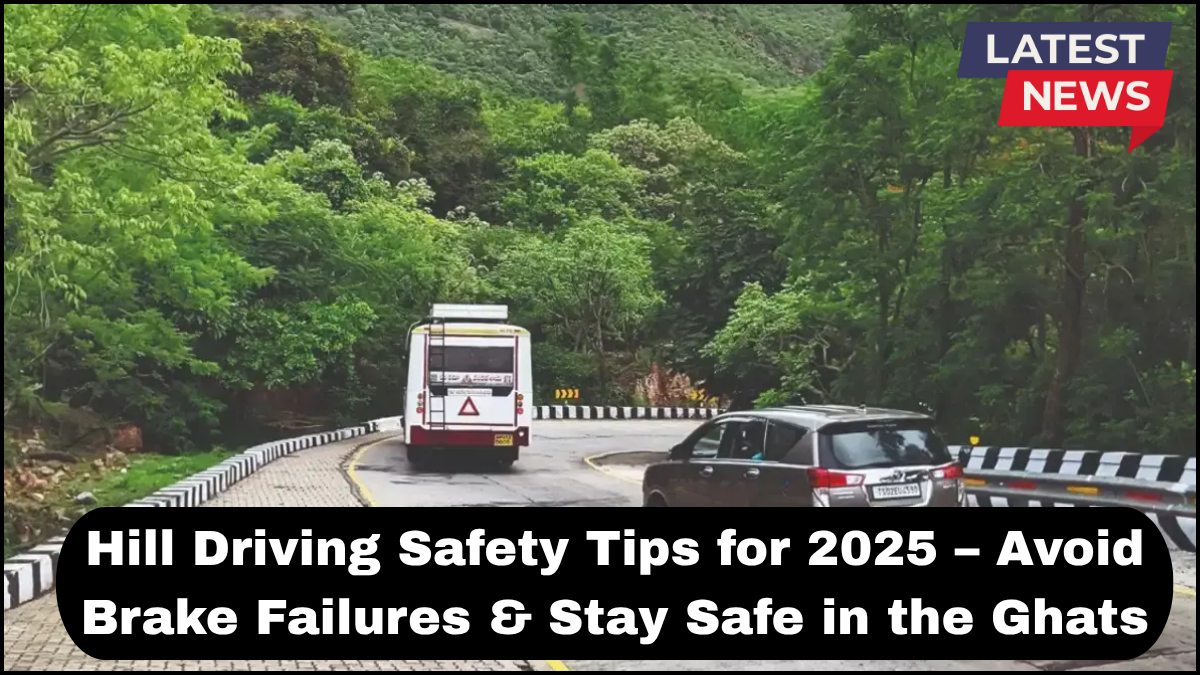Driving through the hills can be thrilling, but without the right precautions, it can quickly turn dangerous. Whether you’re navigating the Western Ghats, Himalayan terrain, or any hilly region, having the right knowledge can prevent disasters. This guide offers the most essential Hill Driving Safety Tips for 2025, focusing especially on avoiding brake failures and mastering gear control for a safe journey.

Understand the Terrain Before You Drive
Every hill road is unique. Before setting off, study your route using maps or GPS tools that highlight elevation, hairpin bends, and steep gradients. Stay updated on road conditions, landslides, or weather warnings. Local driving advisories can also provide useful insights.
Perform a Comprehensive Brake Check
Brake failure on a slope is one of the most common causes of accidents in hilly regions. Always inspect your brakes thoroughly before a hill trip:
- Check brake pads for wear and tear.
- Inspect brake fluid levels and ensure there are no leaks.
- Test your brakes in a safe area before climbing or descending.
Modern cars often come with ABS, but don’t rely solely on it. In steep conditions, manual judgment matters more.
Use Engine Braking, Not Just Foot Brakes
When descending hills, keep your vehicle in a lower gear. This technique, known as engine braking, helps control speed without overheating the brake system.
For manual transmissions:
- Shift into second or third gear when descending steep slopes.
- Avoid switching to neutral or coasting downhill.
For automatics:
- Use the “L” or “2” gear settings provided for hill driving.
This method ensures that your brakes don’t overheat and fail during long descents.
Master Gear Control on Steep Roads
Proper gear control is crucial for uphill and downhill driving. On ascents, use lower gears to generate the torque needed to climb. Shifting too early to higher gears can stall the engine or cause rollback.
During downhill drives, lower gears allow better control and reduce the need for constant braking.
Tip: Always downshift before you begin the slope, not while on it.
Maintain a Safe Speed and Distance
Speed limits are lower for a reason in the hills. Control your speed and keep a safe distance from the vehicle ahead, especially around blind curves and hairpin bends. Visibility can change in seconds due to fog or sharp turns, so never overtake unless you’re absolutely sure.
Check Tires and Suspension
Worn-out tires or weak suspension can be hazardous in the hills. Check for:
- Adequate tread depth
- Correct air pressure (don’t overinflate)
- Any unusual noises or vibrations when turning
Suspension problems may reduce vehicle stability during cornering on hilly roads.
Use Horns at Blind Turns
In many hilly regions, using your horn is standard practice before blind curves. It alerts oncoming vehicles to your presence and reduces collision risk. Many areas even have signage encouraging this behavior.
Don’t Overload the Vehicle
Overloading not only affects acceleration and braking but also puts extra stress on your vehicle’s components. Travel light and keep weight distribution balanced, especially if you’re carrying luggage on the roof.
Plan for Emergencies
Even with all precautions, things can go wrong. Always carry:
- A first-aid kit
- A spare tire and tool kit
- Jumper cables
- Emergency food and water
- Mobile charger/power bank
- A paper map in case of no signal
Follow Local Rules and Respect Nature
Hill roads often pass through eco-sensitive zones. Avoid honking unnecessarily, do not litter, and always follow local traffic laws and speed limits. Being respectful keeps you and the environment safe.
FAQs
Q1: Why is engine braking important in hilly areas?
A: Engine braking reduces the load on your foot brakes, preventing overheating and failure during long descents.
Q2: How can I tell if my brakes are overheating?
A: Signs include a burning smell, reduced braking power, or a spongy brake pedal. If this happens, stop the car and let the brakes cool.
Q3: Is it safe to use cruise control in the hills?
A: No. Cruise control can be dangerous in hilly terrain due to changing road conditions and the need for frequent manual control.
Q4: How often should I inspect my vehicle before a hill drive?
A: Do a full inspection every time you plan a hill trip. Brakes, tires, coolant, and transmission fluid should be checked thoroughly.
Q5: What is the best gear to use while going downhill?
A: Use lower gears (1st, 2nd, or 3rd depending on steepness) to maintain speed without relying heavily on brakes.
click here to learn more